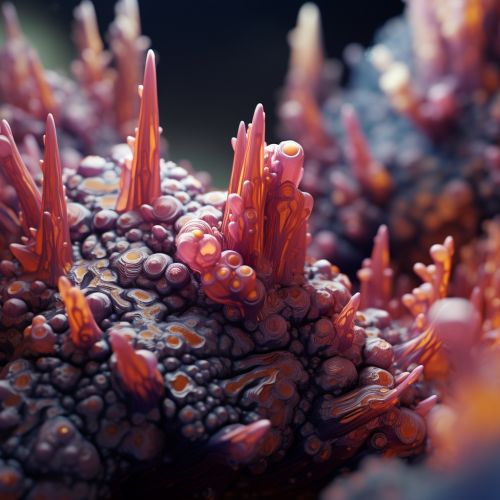Methanobacterium
Overview
'Methanobacterium' is a genus of microorganisms that belong to the Methanobacteria class of the Euryarchaeota phylum. These are anaerobic organisms, meaning they thrive in environments devoid of oxygen. They are known for their ability to produce methane as a metabolic byproduct, hence the name 'Methanobacterium'.


Morphology
Methanobacterium species are typically rod-shaped and have a Gram-positive cell wall structure. The cell wall is unique and composed of pseudomurein, a substance that is chemically distinct from peptidoglycan, which is found in the cell walls of true bacteria.
Metabolism
Methanobacterium are chemoautotrophic, meaning they obtain energy by oxidizing chemical compounds. Specifically, they are known as methanogens, organisms that produce methane as a metabolic byproduct. They do this through a process known as methanogenesis, which involves the reduction of carbon dioxide to methane using hydrogen as an electron donor.
Habitat
Methanobacterium are typically found in environments where oxygen is scarce or absent. These include anaerobic digesters, marshlands, landfills, and the gastrointestinal tracts of ruminant animals such as cows and sheep.
Significance
Methanobacterium play a crucial role in the global carbon cycle. By converting carbon dioxide into methane, they help to remove this greenhouse gas from the atmosphere. However, methane itself is a potent greenhouse gas, and the release of methane from natural and human-made sources is a significant contributor to global warming.
Genomics
The genomes of several Methanobacterium species have been sequenced, providing insights into their metabolic capabilities and their adaptation to anaerobic environments.
